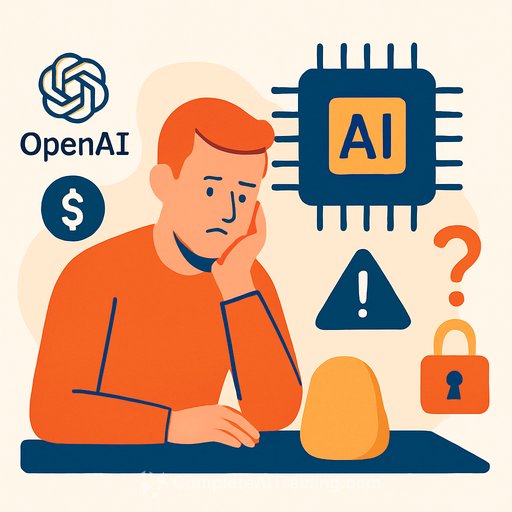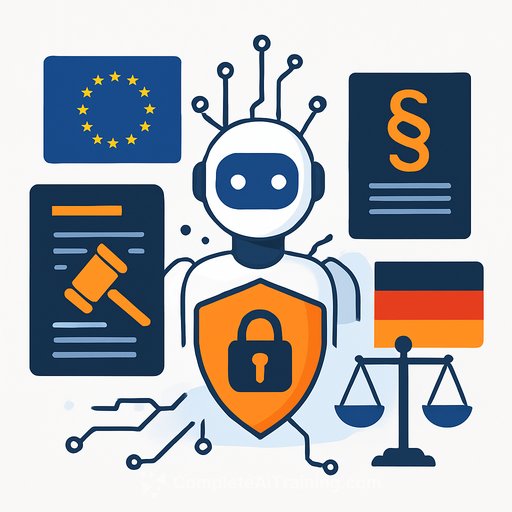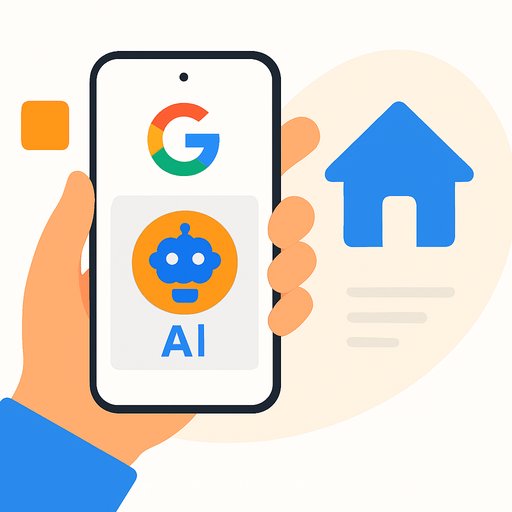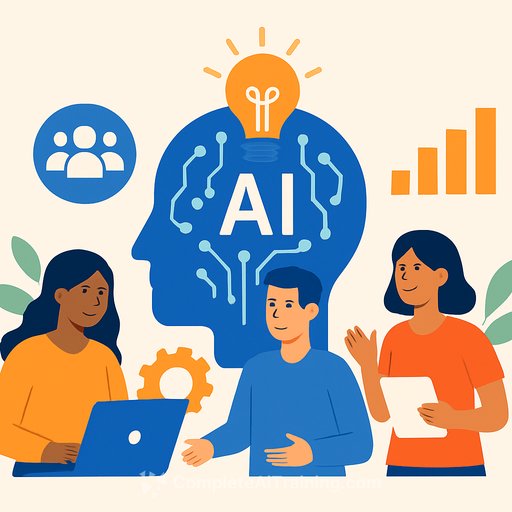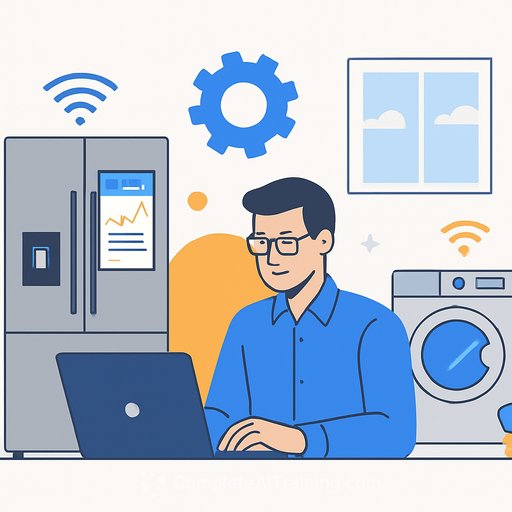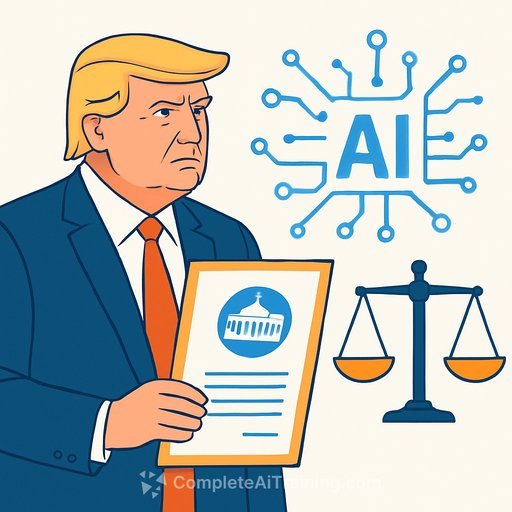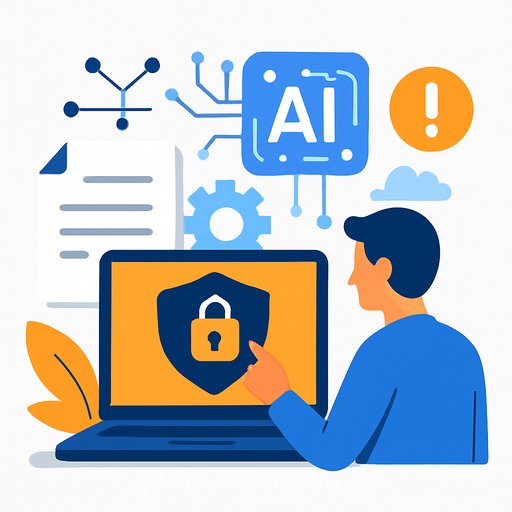OpenAI + Jony Ive's Screenless AI Device Hits Snags: What Product Teams Should Learn
OpenAI and Jony Ive are building a palm-sized, screenless device that senses the world through audio and video and responds to natural requests. According to multiple sources, the team is facing unresolved issues that could delay a launch. The sticking points are product "personality," privacy-by-design, and the enormous cost and availability of compute for mass-scale inference.
The device is reportedly roughly smartphone-sized with a camera, microphone, and speaker, and may include multiple cameras. The ambition: a new human-computer interface that moves beyond screens and taps. The challenge: making it safe, affordable, and fast enough to feel useful in real life.
The core blockers
- Personality and UX: Defining a consistent, helpful assistant behavior without creepiness or overconfidence. Clear boundaries for tone, initiative, and refusals matter as much as features.
- Privacy and trust: Always-listening sensors demand on-device wake detection, strict data minimization, transparent storage/retention, and easy kill switches. Camera use needs visible status, opt-in scopes, and encryption end-to-end.
- Compute and cost: Running large models for millions of users is expensive and supply-constrained. Unlike Alexa or Google Home, OpenAI is still scaling capacity for ChatGPT-adding a consumer device multiplies inference load and risk.
- Hardware constraints: Multi-camera input, low latency, and battery life compete with thermal limits and bill of materials. Without tight model optimization, any screenless device will feel slow or run hot.
Why compute is the choke point
Consumer hardware shifts inference costs from "nice to have" to "must work every time." That means guaranteed GPU/NPU capacity, predictable latency, and a unit economics plan that can survive real usage, not demo traffic. Without reliable supply and aggressive model optimization, support costs and user churn will crush a launch.
What's known so far
Sources say the device will rely on a camera, mic, and speaker for input/output rather than a display. OpenAI acquired Jony Ive's company io for $6.4 billion in May, signaling a serious hardware bet. OpenAI's CFO Sarah Friar framed it as the next interface shift, similar to the leap from keypads to touchscreens, and highlighted how early mobile mirrored desktop before native patterns emerged. Meanwhile, OpenAI's private market valuation reportedly reached $500 billion after an employee share sale-hardware is one path they're exploring to support that scale.
Implications for product, engineering, and IT teams
- Start with principles, not features: Define the assistant's boundaries (initiative, refusals, empathy, escalation) as a contract. Test the "awkward edge cases" early-misheard requests, bystanders on camera, or background TV audio.
- Privacy-by-default architecture: Local wake word, on-device redaction for faces/PII when possible, encrypted transport and storage, visible capture indicators, and an immediate hardware mute. Treat data retention as a liability, not an asset.
- Hybrid inference plan: Offload perception (ASR, VAD, visual tagging) to edge NPUs where feasible; reserve cloud for complex reasoning. Build graceful degradation paths: offline, low-power, and low-connectivity modes that still feel useful.
- Latency budgets: Set end-to-end SLOs (capture → interpret → respond) and measure with real-world noise and movement. If the assistant can't respond in under a couple of seconds, usage drops.
- Unit economics you can defend: Model tokens per session, expected QPS, peak concurrency, and per-user monthly cost. Add a buffer for model updates and unexpected usage spikes.
- Supply strategy: Secure multi-cloud capacity, reservations, and fallbacks. Use model distillation and quantization to cut costs while preserving perceived quality.
- Safety and compliance: Build consent flows for multi-person environments, audit logs, and region-aware data handling (e.g., GDPR/CPRA). Make "why the assistant did this" explainable in plain language.
A simple action plan
- Prototype now: Use a smartphone harness with external mic/camera to simulate the experience without custom hardware.
- Write the assistant brief: Personality, tone, refusal policy, and escalation rules on one page. Treat it like an API spec for behavior.
- Threat model the sensors: Enumerate capture risks, storage flows, and human-in-the-loop review policies. Ship with "privacy first" defaults.
- Build the cost model: Estimate per-user inference cost across tiers (free, paid, enterprise). Tie model upgrades to margin thresholds.
- Pilot with constraints: Limit geography, hours, and features to stress-test latency and support. Expand only after SLOs hold for four weeks.
Useful resources
- OpenAI ChatGPT for understanding usage patterns and constraints across large user bases.
- Complete AI Training: Courses by job for product leaders, engineers, and IT teams building AI features.
If you're exploring screenless assistants, focus on three numbers before any launch: target latency per request, cost per active user per month, and the percentage of on-device tasks. Get those right, and the rest of the roadmap gets clearer.
Your membership also unlocks:

